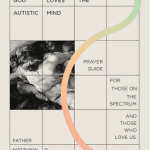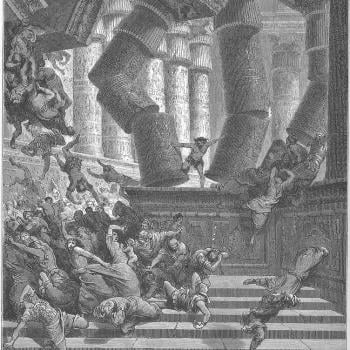A reader sent me the following question:
You identify the Ramses and Pithom of Exodus with cities built during Ramesses II’s reign. This would make Ramesses the Pharaoh of Exodus 1, who enslaved Israel and gave the midwives that bloody order. Because of Exodus 2:23, we know that at least one Pharaoh died during Moses’ stay in Midian. Therefore, making Ramesses the Exodus 1 Pharaoh makes his son Merneptah [r. 1213-1203] or perhaps a later king, the Exodus Pharaoh, which is impossible as Merneptah’s five-year stele places Israel in Canaan.
Good question.
Exodus 1:11 (RSV) Therefore they set taskmasters over them to afflict them with heavy burdens; and they built for Pharaoh store-cities, Pithom and Ra-am’ses.
The text doesn’t indicate which Pharaoh this was. As I noted in my article, Moses’ “Store-City” Pithom & Archaeology, the two cities were already in existence when Ramesses II became Pharaoh (archaeology establishes and confirms this).
[T]here was a “settlement” [in Pithom] 500 years before this time, but apparently no large-scale structures, let alone a “fortress.”
Given these facts, “built” in Exodus 1:11 (if interpreted in a literal chronology in context) could feasibly mean, more specifically, “started to build.” Or, if it is referring to what happened later (as a sort of footnote in the text), it could be interpreted as follows — as I wrote in the same paper:
[W]hen the Bible says that the city was “built” it referred to the fortress walls and other large structures being built, or the city being significantly fortified. We might say, similarly, that “the modern city of San Francisco was built after the earthquake of 1906″: when in fact, the city was re-built then.
Jacques Doukhan, in his book, Hebrew for Theologians: A Textbook for the Study of Biblical Hebrew in Relation to Hebrew Thinking (University Press of America, 1993) noted that in the Hebrew mind, “the content of time prevails over chronology. Events which are distant in time can, if their content is similar, be regarded as simultaneous.” (p. 206)
Likewise, Thorleif Boman, in his book, Hebrew Thought Compared with Greek (New York: W. W. Norton & Company, 1960), devoted 61 pages to the topic of “Time and Space.” He noted that for the Hebrews,
[T]ime is determined by its content, . . .
[W]e, too, characterize time by its content. We speak of wartime, peacetime, hard times, time of mourning, feast time, favourable time, office hours, bad year, etc. . . . (pp. 131, 140)
Biblical writers (or their later editors, such as Ezra) also frequently used the well-known literary technique of compression, or telescoping; i.e., condensing or abridging a story and leaving out details in a way which may lead some (not familiar with the technique) to erroneously believe that it all happened on one day, or a short period of time. This methodology was unquestionably used by ancient writers such as Josephus, Plutarch, Cicero, and Quintillian. It was described by Lucian of Samosata (c. 125 AD-after 180 AD), a Syrian rhetorician, in his treatise, How to Write History.
Exodus 2:23 In the course of those many days the king of Egypt died. . . .
***
*
Summary: Does the death of a Pharaoh, mentioned in Exodus 2:23, create difficulties in Exodus chronology & the view that Ramesses II was the Pharaoh of the Exodus? No.














